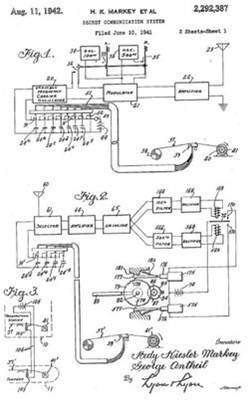LEXINGTON, MASSACHUSSETTS — Frequency Therapeutics, Inc. (Nasdaq: FREQ), a clinical-stage regenerative medicine company focused on developing therapeutics to activate a person’s innate regenerative potential to restore function, today shared the results from its FX-322-113 study, a placebo-controlled trial evaluating the administration of FX-322 in subjects with severe sensorineural hearing loss (SNHL).
In the study, FX-322 was associated with a hearing signal as shown by improvements by four subjects in a sentence-in-noise test.
FX-322-113 Hearing Loss Study
FX-322-113 is a double-blind, placebo-controlled Phase 1b study designed to assess the local and systemic safety of a single dose of FX-322, and to evaluate hearing responses in a cohort of individuals with severe SNHL (pure tone average deficit between 71-90 decibel (dB) hearing level), a patient population that may have considerable damage to their inner ears and where cochlear implants may be the only potential intervention to improve hearing.
Subjects were randomized 4:1 and received either FX-322 or placebo in one ear. Safety, otologic and audiologic assessments were conducted at days 30 and 90 following administration of FX-322 or placebo.
To gain a more comprehensive understanding of the potential impact of FX-322 in this population, the Company evaluated hearing function using multiple tests of speech perception in both quiet and noisy backgrounds, including the Bamford-Kowal-Bench Sentence-in-Noise exam (BKB-SIN). BKB-SIN is a validated test designed for severe SNHL populations (including cochlear implant patients), measuring the change in signal-to-noise ratios (SNR) required for a subject to correctly repeat words in a sentence.
In the FX-322-113 study, BKB-SIN test improvements were observed in four subjects, all of whom exceeded the 95 percent critical difference of 3.1 dB SNR, with two subjects showing a 6 dB response. A single placebo patient had a 3.6 dB change. In the study, subjects did not show substantial changes in speech perception measures in quiet, the safety profile in the study was favorable and there were no treatment-related serious adverse events reported.
“Given the level of cochlear damage, identifying single words in any audiologic test can be very challenging for these individuals. Response to the BKB-SIN test and a 6 dB improvement in the signal-to-noise ratio in multiple severe subjects is highly encouraging and consistent with the improvement we see in some patients following cochlear implantation,” said René Gifford, Ph.D., Professor and Director, Cochlear Implant Research Laboratory Department of Hearing and Speech Science at Vanderbilt University and a member of Frequency’s clinical advisory board.
“This is the real-world equivalent to being able to halve the distance between two people in a conversation, which can be very impactful on an individual’s ability to communicate and engage in society. It is exciting to consider the potential of a restorative therapeutic as a component of the treatment paradigm for individuals with severe SNHL, either as a stand-alone treatment or in combination with hearing technology such as hearing aids and cochlear implants, to improve patient outcomes.”
–René Gifford, Ph.D.
“Based on data pointing to FX-322 being localized in the higher frequency portion of the cochlea, as well as the proposed mechanism of action, these promising results are suggestive both of a hearing signal and potential functional improvements enabling speech perception in a noisy environment,” added Brian Monson, Ph.D., an assistant professor in the Department of Speech and Hearing Science in the College of Applied Health Science at the University of Illinois. “These study findings are important as this outcome cannot currently be achieved using hearing devices that amplify sound, further highlighting the potential for a restorative intervention to enhance speech clarity.”
Regenerating Inner Ear Hair Cells
FX-322 is Frequency’s lead hearing restoration product candidate and is designed to regenerate auditory hair cells to restore hearing function.
Frequency currently is enrolling a new Phase 2b (FX-322-208) study of subjects with noise-induced or sudden sensorineural hearing loss, with hearing loss severities primarily in the moderate to moderately severe ranges (35 – 85 dB).
“This is the third FX-322 study where we have observed a hearing signal, furthering our confidence in our clinical program and the potential of a regenerative treatment for sensorineural hearing loss. The learnings from this study, and all of our early-phase studies to date, have provided Frequency and the field overall with important insights as we extend our understanding of how our therapeutic candidate may provide clinically meaningful benefit to the millions of individuals with SNHL that today have no restorative treatment options”
–David L. Lucchino, Frequency’s Chief Executive Officer
About Frequency Therapeutics
Frequency Therapeutics is leading a new category in regenerative medicine that aims to restore function – first in hearing loss and then in multiple sclerosis (MS) – by developing therapeutics that activate a person’s innate regenerative potential within the body through the activation of progenitor cells to restore lost function. Frequency’s hearing research focuses on cochlear restoration and auditory repair, and its lead asset, FX-322, is a small-molecule product candidate that is the first to show statistically significant and clinically meaningful hearing improvements in clinical trials for SNHL. Frequency is also following early restorative signals in MS to develop medicines with the same underlying regenerative science being brought to hearing loss. Headquartered in Lexington, Mass., Frequency has an ex-U.S. license and collaboration agreement with Astellas Pharma Inc. for FX-322, as well as additional collaboration and licensing agreements with academic and nonprofit research organizations including Massachusetts Eye and Ear, Mass General Brigham, the Massachusetts Institute of Technology, the Scripps Research Institute and Cambridge Enterprises Limited.
Source: Frequency Therapeutics







